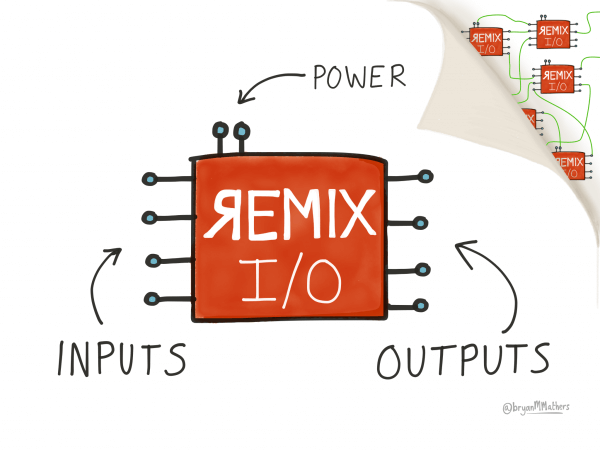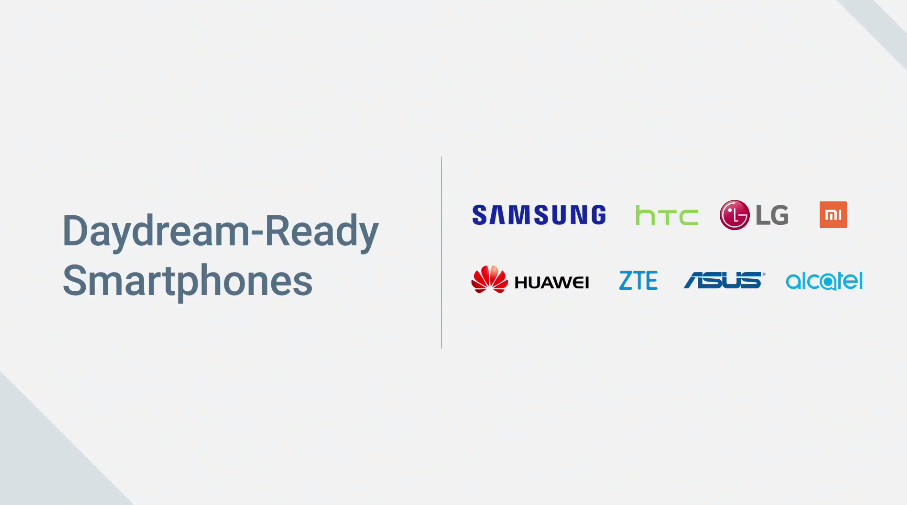In a previous post, I explored the potential deleterious consequences of equating Open Badges to credentials. My point was not to critique credentials, nor the use of Open Badges as credentials (there is nothing wrong with that), but to build on Carla Casilli’s call:
“we still need badges to flourish in the non-regimented space of not-credential.”
To understand the urgency of a response to that call, we need a reality check and to pay proper attention to the actual state of Open Badges. If we had to infer a definition based on current Open Badge practice and technology, we would have to write:
Open Badges: an institution-centric credentialing technology designed to support formal recognition of learning.
The Open Badge Infrastructure gives institutions the power to act, i.e. create and deliver badges (‘spray’) and learners the right to collect and display badges (‘pray’). While learners have to carry a backpack to prove their credentials, issuers do not!
In this post, we will move the discussion from the critique of equating Open Badges to credentials to exploring the potential of badges as signs of recognition, setting the foundations for making informal recognition as valuable and potent as formal recognition. This can be achieved by moving the centre of gravity of Open Badges from institutions to individuals and self-organised communities.
Formal and informal recognition
While there are many initiatives towards the recognition of prior learning and recognition of prior experience, what is usually meant is formal recognition of prior learning as in accreditation of prior learning. Although there is abundant literature on the [formal] recognition of informal learning (including almost the whole literature about Open Badges!), there is almost none on the informal recognition of informal learning, the “non-regimented space of not-credentials” evoked by Carla Casilli.
To frame the question of Open Badges as signs of recognition I start by eliciting two key dimensions:
-
formal / non-formal
- traditional / non-traditional
There are other relevant dimensions like institution / community, static / dynamic, past / future. To include those dimensions in a manageable representation, two dimensional, I decided to operate a simplification, associating them with the two key dimensions initially defined :
-
Traditional + static + past
-
Non-traditional + dynamic + future
-
Formal + institutional
-
Informal + community
The association of traditional with static and past, and non-traditional with dynamic and future is based on my experience with ePortfolios and identity construction — now reinforced with Open Badges! For the sociologist Jean-Claude Kaufmann, identity in the modern world is about The Invention of Self (the title of one of his books):
“[…] Most research on identity question the past or the present ( “Where are you from?” and “Who are you?”), while the concern with identity is actually mostly connected to the invention of self. Ordinary dreams prepare the future [Singer, 1975], including the immediate future. The self-concept is an instrument of action and change.”
-Jean-Claude Kaufmann, l’Invention de Soi (p. 179)
It has been my contention with ePortfolio practice, and now Open Badges, that the questions expected by potential readers (“consumers”) were “Where are you from” and “What have you done” rather than “Where do you want to go” and “What would you like to do.” The implicit identity model contained in many ePortfolio and Open Badge practices is more the product of a reflection of socialisation (something done to the individual) than of a reflection on oneself (something done by the individual). Most Open Badges are not defined by learners, nor ePortfolios structured by institutional templates Moreover, the reflection process claimed by ePortfolio practitioners as a central element of practice, is generally confined within acceptable institutional boundaries: reflect, but not too much, certainly not to the point of challenging the institution!
To the dichotomy individual / institution, I prefer institution / community as individuals do not exist on their own, but in relation to others. I define formal recognition as institution-centred while informal recognition as community-centred. Of course, institutions of formal educations are also communities where informal learning and recognition takes place, but Open Badges tend to be solely used to support formal recognition by the institution — learners are treated as collectors, not connectors.
The plane of recognition
Formal / non-formal, traditional / non-traditional, those two key dimensions structure a space I call the plane of recognition. This plane is divided into four quadrants:
-
Conformance — traditional/formal
-
Inclusion — traditional/non-formal
-
Enabling — formal/non-traditional
-
Empowerment — non-formal/non-traditional
With the main elements of the recognition plane defined, it is now time to position the different types of Open Badges. The result does not pretend to be flawless; it is primarily an invitation to reflect on the state of the art of Open Badge technology and practice to explore the areas insufficiently or not yet explored.

Open Badges on the plane of recognition
Conformance and inclusion badges
Micro-credentials, competency badges and nano-diplomas are positioned in the conformance quadrant. They are mostly delivered by institutions based on past performance. The relation to the future is weak as it is at best an educated guess about future performance: “if you have been able to do that in the past, I infer that you should be able to do it again in the future.” They reflect a need for conformance, e.g. filling-in a position defined by an employer or satisfying the requirements of a curriculum or a competency framework — presented often as alternative credentials, micro-credentials might not be so alternative after all…
Traditional Open Badges are also objects of the past as once earned they remain static objects that do not grow with time. Qualifying those badges as “objects of the past” is no more derogatory than describing the cerebellum as being part of the “reptilian brain” — our survival depends on it! The comparison of those badges with the reptilian brain stands even more when we know that the reptilian brain is reliable but tends to be somewhat rigid and compulsive — think of carpet badging!
Enabling Open Badges by opposition are dynamic and focused on the future. They are able to change state to take into account experience. Enabling Open Badges are to the traditional Open Badges what the limbic brain (and may be, one day, the cortex) is to the reptilian brain. The very first level of transformation could be the ability to endorse a badge, something that should be possible in 2016, thanks to the new Open Badge specification!
Positioning Scout Badges in the inclusion quadrant, rather than conformance is based on my understanding of those badges (based on my experience as a scout): they are primarily a means to recognise and integrate members into a community. Badges might be connected to specific skills or values, but more than their explicit content, it is their implicit meaning that is their main value: the language generated by this kind of badge is more a language of integration and connection than the abstract language of competencies — analogic vs. analytic! I suppose that there are other examples of such badges and I will try to find more examples in the future (suggestions welcome!).
Enabling and empowerment badges
To build on Bernard Bull’s recent post, “Is There Enough Dreaming in School? (link) I had to place a “Dream Badge”. It is clearly not a credential — unless someone decides to define a competency framework with performance criteria and the whole paraphernalia of competency-based education to assess the “quality” of dream badges! A dream badge could be a call for recognition by the community (“I want to travel to Mars”), meeting people sharing the same dream or who could help in achieving it — or to bringing the dreamer back on track!
I have placed the Dream Badge in the enabling quadrant because it is clearly oriented towards the future and its meaning is established through the connections within a community (not necessarily predefined). It is a badge that learners can use to invent their identity.
What characterises the empowerment quadrant is a place where learners are the initiators! It reflects what in the past I called “user generated context” as opposed to “user generated content” (into a predefined context). Learners, and more generally people who are not yet dead (and therefore learn!) have the ability not just to adapt to the existing world but invent future ones, for themselves and the community.
“Life learned itself into existence” —James Gleick
In this quadrant, (not-yet-dead) people have the power to act on and with Open Badges: they are the creators, issuers and endorsers of badges. This quadrant, is not for the Backpack-rats, but for the connectors rather than collectors, for those who understand the radical power of learning captured in James Gleick’s aphorism: “Life learned itself into existence.”
In the enabling quadrant, I have placed smart badges, conversational badges and badges as launchpads. Imagine a badge which describes, not just what someone has done or might be able to repeat in the future, but the things one could do with what they have learned, not just new badges to earn (!), but real things to do, based on one’s passions or interests. A traditional literacy badge will list the skills acquired, while a launchpad badge might contain much more, such as pointers to reading circles, writing groups, local authors, public libraries, people who need help with their writing and much more. The information might not be in the badge itself but provided by services exploiting the metadata it contains. Enabling badges require a different infrastructure that goes beyond the mere storage of badges in a backpack.
Beyond credentials, beyond conformance
Looking at Open Badges through the lenses of recognition rather than credentialing changes the perspective and possibly puts a crude light on the inflated claims made by some of the Open Badges initiatives as being “non-traditional,” “disruptive” or “empowering learners.” It would not be an unreasonable guess to state that the current centre of gravity of Open Badges initiatives is more likely to be found in the conformance rather than the empowering quadrant. This situation could and must change.
To be truly empowered with Open Badges, we need the power to act on them, be their designers, creators, issuers and endorsers, we also need the power to act with them by inventing the services that will extract their full value. Such is the programme that was at the origin of the Open Badge Passport (http://www.salava.org/ and https://openbadgepassport.com/) to establish and nurture networks of trust. Trust, like recognition and contrary to credentialing can be unconditional — unconditional credentialing simply does not make sense.
To move beyond credentials and conformance, we need to expand past the space of formal recognition, embracing the power of Open Badges in supporting informal recognition. I will explore in a later post how informal recognition could be even more valuable and potent than formal recognition.













 Any big news regarding Project Ara, what was once Motorola’s project and now Google’s big endeavor, has been relatively quiet as of late.
Any big news regarding Project Ara, what was once Motorola’s project and now Google’s big endeavor, has been relatively quiet as of late.


 Google executives have confirmed to Android Police that the seamless update feature in Android N will not be making its way to current Nexus devices. The feature has been borrowed by Google from Chrome OS and removes the hassle of installing any system updates manually, as the OS itself downloads the update in the background and applies it in the next time the device is restarted or powered on.
Google executives have confirmed to Android Police that the seamless update feature in Android N will not be making its way to current Nexus devices. The feature has been borrowed by Google from Chrome OS and removes the hassle of installing any system updates manually, as the OS itself downloads the update in the background and applies it in the next time the device is restarted or powered on.



 For your consideration: the
For your consideration: the 











